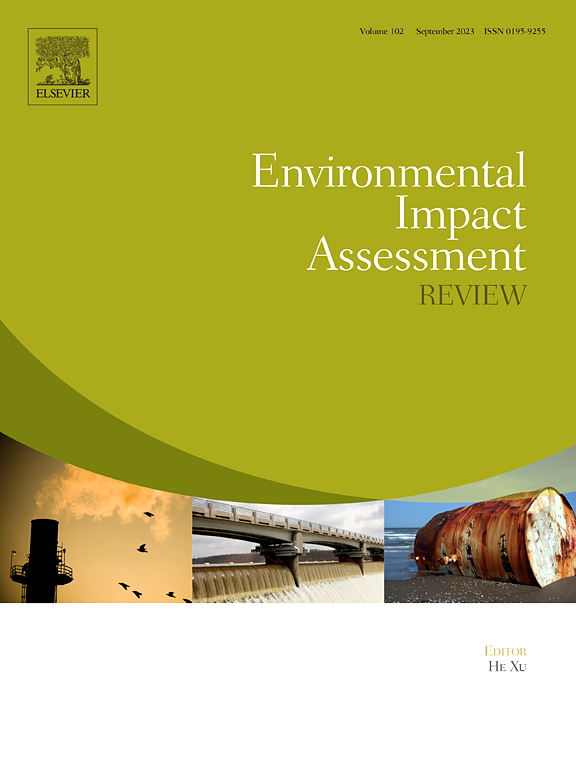Allocation of pollution and carbon emission reduction targets for city clusters: Empirical evidence from China's Yangtze River Delta city cluster based on cost optimization
IF 9.8
1区 社会学
Q1 ENVIRONMENTAL STUDIES
引用次数: 0
Abstract
The rational allocation of pollution and carbon emission reduction targets for city clusters, particularly the Yangtze River Delta (YRD), which has the largest economic scale in China, is critical for fostering regional economic growth, facilitating coordinated emission reductions, and improving environmental quality. This study integrates the principles of fairness, capacity, and efficiency. It utilizes the stochastic impacts by regression on population, affluence, and technology (STIRPAT) model and planning models to develop the lowest-cost allocation scheme for pollution and carbon emission reduction based on the reduction targets for the YRD city cluster. The results indicate the following. (1) The integrated air pollutant emissions in the YRD city cluster exhibit a fluctuating upward trend, with population size having the greatest impact. (2) Regional development within the YRD city cluster is uneven, with coastal cities generally exhibiting higher maturity than inland cities. Shanghai has the highest maturity, while Chizhou exhibits the lowest. (3) The emission reduction targets for the city cluster and the high, medium, and low maturity groups are 2,200,753 tons of equivalent, 1,035,610 tons of equivalent, 572,800 tons of equivalent, and 592,343 tons of equivalent, respectively. Although the use of the maturity indicator causes an allocation of more emission reduction tasks to cities in the high maturity group, most cities in the low maturity group require a larger proportion of emission reductions. The research findings have significant policy importance for establishing a fair and effective emission reduction target allocation mechanism, achieving regional total emission control, and stimulating collaborative emission reduction efforts.
城市群污染与碳减排目标配置:基于成本优化的中国长三角城市群的经验证据
合理配置城市群特别是中国经济规模最大的长三角城市群的污染减排目标和碳减排目标,对于促进区域经济增长、促进协同减排、改善环境质量具有重要意义。本研究整合了公平、能力和效率原则。利用人口、富裕和技术随机影响回归(STIRPAT)模型和规划模型,构建了基于长三角城市群减排目标的污染和碳减排最低成本分配方案。结果表明:(1)长三角城市群大气污染物综合排放量呈波动上升趋势,受人口规模影响最大;②长三角城市群区域发展不均衡,沿海城市成熟度普遍高于内陆城市。上海的成熟度最高,池州的成熟度最低。③城市群和高、中、低成熟度组的减排目标分别为2,200,753吨当量、1,035,610吨当量、572,800吨当量和592,343吨当量。虽然成熟度指标的使用导致高成熟度组的城市分配了更多的减排任务,但大多数低成熟度组的城市需要更大的减排比例。研究结果对于建立公平有效的减排目标分配机制,实现区域排放总量控制,促进协同减排具有重要的政策意义。
本文章由计算机程序翻译,如有差异,请以英文原文为准。
求助全文
约1分钟内获得全文
求助全文
来源期刊

Environmental Impact Assessment Review
ENVIRONMENTAL STUDIES-
CiteScore
12.60
自引率
10.10%
发文量
200
审稿时长
33 days
期刊介绍:
Environmental Impact Assessment Review is an interdisciplinary journal that serves a global audience of practitioners, policymakers, and academics involved in assessing the environmental impact of policies, projects, processes, and products. The journal focuses on innovative theory and practice in environmental impact assessment (EIA). Papers are expected to present innovative ideas, be topical, and coherent. The journal emphasizes concepts, methods, techniques, approaches, and systems related to EIA theory and practice.
 求助内容:
求助内容: 应助结果提醒方式:
应助结果提醒方式:


